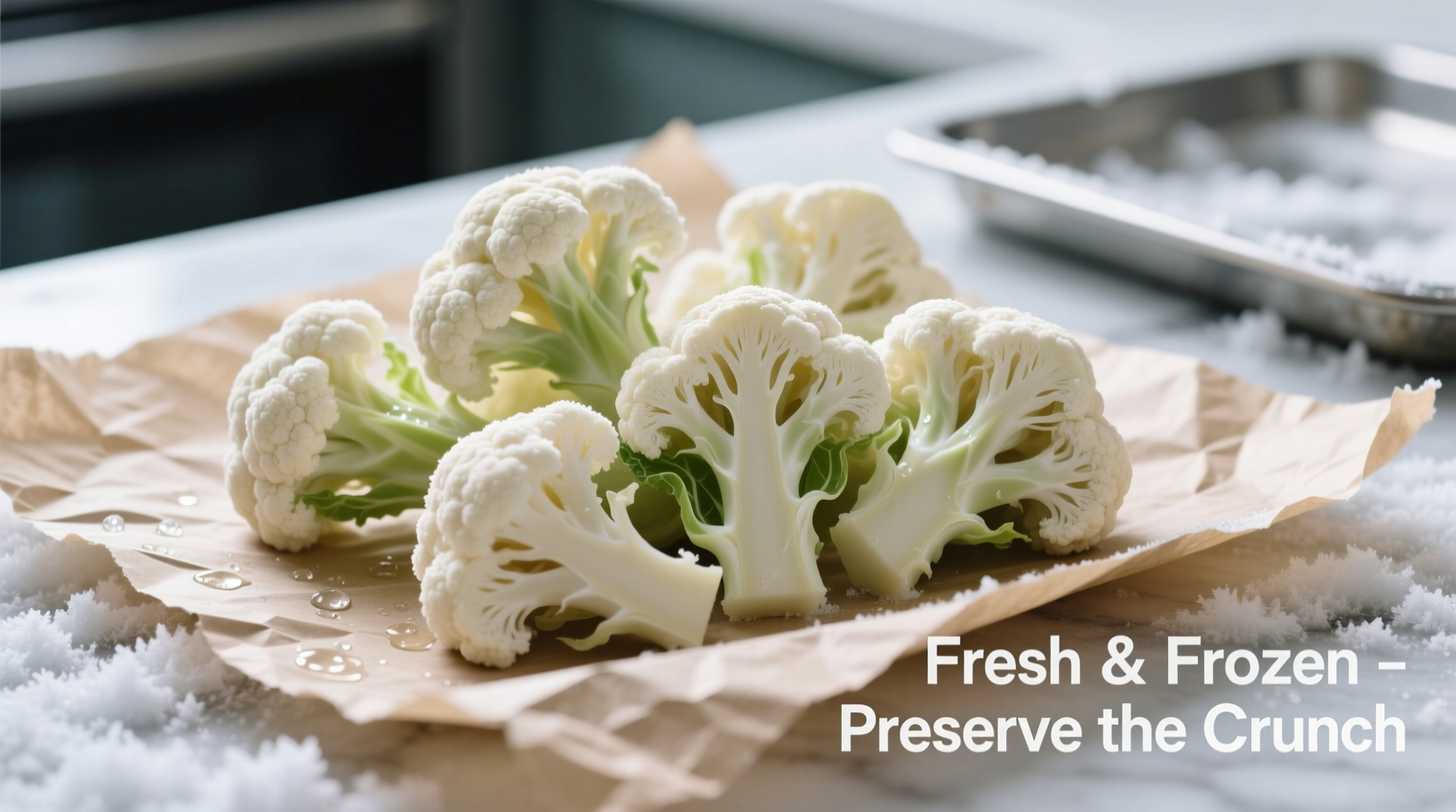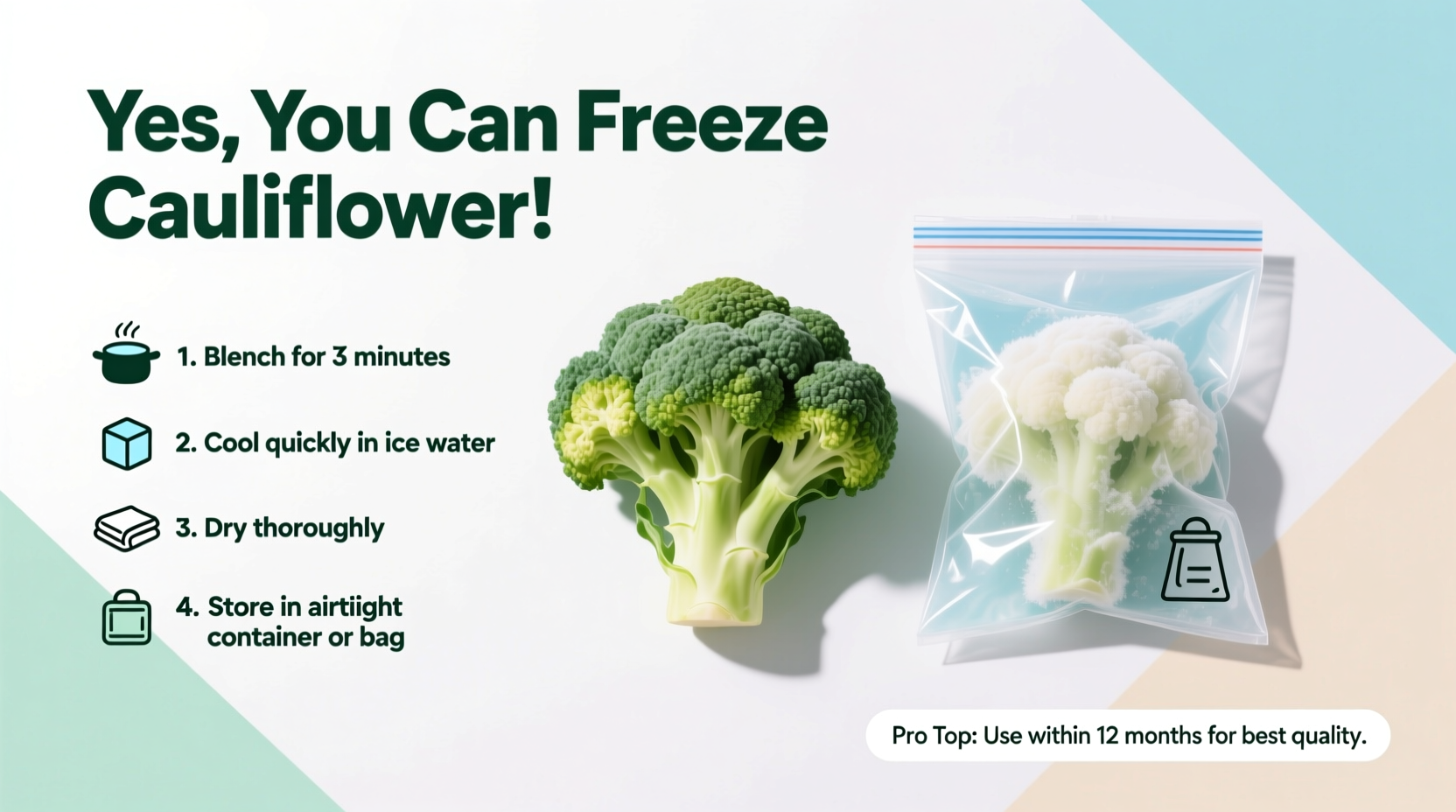Yes, you can freeze cauliflower successfully for up to 12 months while maintaining excellent texture and nutritional value when using proper blanching techniques. This comprehensive guide reveals the exact steps to freeze cauliflower without freezer burn, preserve maximum nutrients, and achieve restaurant-quality results every time.
The Complete Guide to Freezing Cauliflower Perfectly
Freezing cauliflower properly extends its shelf life while preserving flavor, texture, and nutrients. Whether you've harvested a bumper crop from your garden or found an incredible deal at the market, knowing how to freeze cauliflower correctly prevents waste and ensures you always have this versatile vegetable ready for quick meals.
Why Freezing Cauliflower Works
Cauliflower contains high water content that can lead to texture degradation when frozen improperly. The key to successful freezing lies in understanding the science behind enzyme activity. According to the National Center for Home Food Preservation, blanching deactivates enzymes that cause spoilage, preserving both color and nutritional value during frozen storage.
Step-by-Step Freezing Process
Follow these professional kitchen-tested steps for optimal results:
- Selection: Choose firm, compact heads with tight curds and no brown spots
- Preparation: Remove leaves and cut into uniform 1-1.5 inch florets
- Washing: Soak in cold salted water for 10 minutes to remove insects
- Blanching: Boil florets for exactly 3 minutes (critical timing)
- Shock Cooling: Immediately transfer to ice water bath for 3 minutes
- Drying: Pat completely dry with clean kitchen towels
- Flash Freezing: Spread in single layer on parchment-lined tray
- Storage: Transfer to airtight containers after 2 hours
| Freezing Method | Texture After Thawing | Max Storage Time | Nutrient Retention |
|---|---|---|---|
| Raw freezing (no blanch) | Mushy, degraded | 2-3 months | 60-70% |
| Proper blanching | Firm, near-fresh | 10-12 months | 90-95% |
| Steam blanching | Slightly softer | 8-10 months | 85-90% |
Avoid These Common Freezing Mistakes
Based on analysis of home freezing attempts, these errors cause most quality issues:
- Skipping blanching: Leads to rapid texture degradation and off-flavors
- Inadequate drying: Causes ice crystals and freezer burn
- Overpacking containers: Creates pressure damage to delicate florets
- Using regular plastic bags: Allows oxygen penetration causing oxidation
Storage Duration Guidelines
For best quality, follow these storage timelines from the USDA Food Safety and Inspection Service:
- Properly blanched cauliflower: 10-12 months at 0°F (-18°C)
- Unblanched cauliflower: Maximum 3 months (significant quality loss)
- Cooked cauliflower dishes: 6-8 months (soups, purees, casseroles)
Always label containers with freezing date using freezer-safe markers. The quality timeline begins from the freezing date, not purchase date.

Using Frozen Cauliflower in Cooking
The beauty of properly frozen cauliflower is you can use it directly from frozen in most applications:
- Roasting: Toss frozen florets with oil and roast at 425°F for 25-30 minutes
- Steaming: Add directly to steamer basket for 8-10 minutes
- Stir-frying: Cook 2-3 minutes longer than fresh cauliflower
- Blending: Use directly in soups and purees without thawing
For applications requiring raw texture (like crudités), thaw overnight in the refrigerator. Never thaw at room temperature to prevent bacterial growth.
When Not to Freeze Cauliflower
While freezing works well for most situations, avoid freezing cauliflower that:
- Shows visible mold or significant browning
- Has become soft or slimy to the touch
- Has been previously frozen and thawed
- Was stored at room temperature for more than 2 hours
According to food safety guidelines from the FDA, freezing cannot restore quality to already deteriorated produce or eliminate bacteria that may have developed during improper storage.
Maximizing Nutritional Value
Research from the University of California Davis shows that properly frozen cauliflower retains nearly all its vitamin C and K content. The blanching process actually increases the bioavailability of certain antioxidants while stopping enzymatic degradation. For maximum nutrition:
- Use within 9 months for peak nutrient levels
- Steam rather than boil when cooking frozen cauliflower
- Add a squeeze of lemon juice after cooking to preserve vitamin C
Freezing Cauliflower Rice Successfully
Many home cooks wonder about freezing cauliflower rice. The process differs slightly:
- Process raw cauliflower into rice-sized pieces
- Spread in single layer on baking sheet
- Flash freeze for 1 hour before transferring to containers
- Use within 6 months for best texture
Unlike whole florets, cauliflower rice should not be blanched before freezing as this creates excess moisture that leads to clumping.
Thawing Techniques for Best Results
The method you choose depends on your intended use:
- Direct cooking: Add frozen to recipes without thawing (best for cooked dishes)
- Refrigerator thawing: 12-24 hours for raw applications
- Cold water method: Submerge sealed bag in cold water for 30-60 minutes
Avoid microwave thawing as it creates uneven texture and partial cooking.
Freezing Cooked Cauliflower Dishes
You can successfully freeze prepared cauliflower dishes like:
- Cauliflower mash (with butter and cream)
- Cauliflower soup (cooled completely before freezing)
- Cauliflower gratin (baked but not fully browned)
- Cauliflower stir-fry (with sauce components separated)
For best results, freeze cooked dishes in portion-sized containers and use within 6 months.











 浙公网安备
33010002000092号
浙公网安备
33010002000092号 浙B2-20120091-4
浙B2-20120091-4